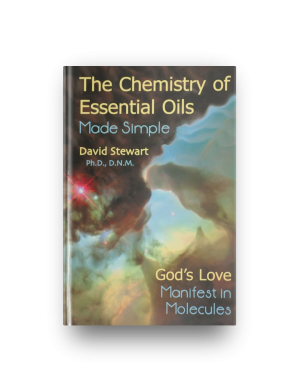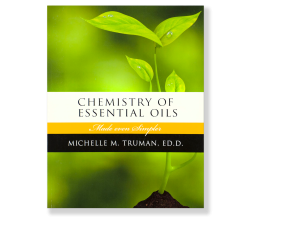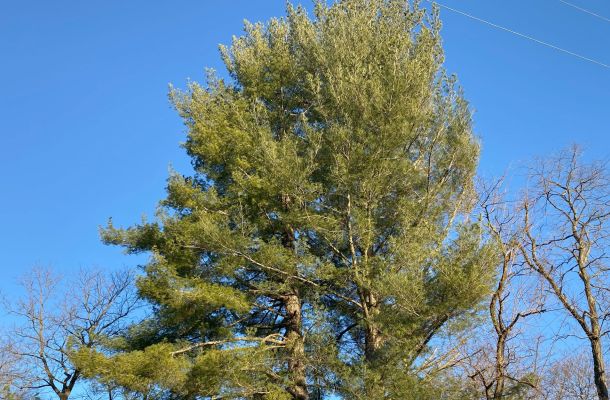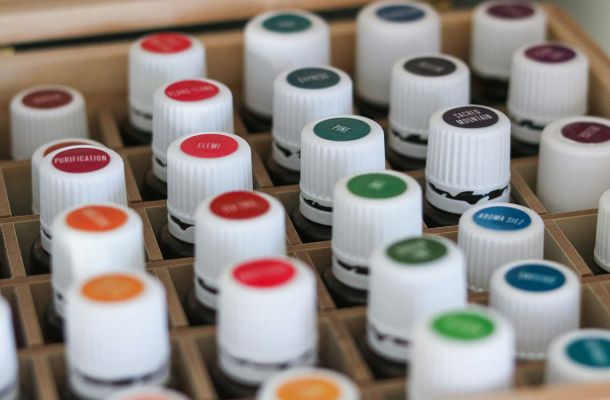Sunshine, Suntan, and Sun-Sensitizing Oils- Volume 3, Number 5
Please feel free to share this newsletter!

Raindrop Messenger
Official Newsletter of CARE
The Center for Aromatherapy Research and Education
12923 BCR 800, Marble Hill, Missouri USA 63764
(573) 238-4846
NOTE: The information in this newsletter is intended for education purposes only. It is not provided in order to diagnose, prescribe, or treat any disease, illness, or injured condition of the body or mind. Anyone suffering from any disease, illness, or injury should consult with a physician or other appropriate licensed health care professional.
Sunshine, Suntan, and Sun-Sensitizing Oils
By David Stewart, PH.D., R.A.
Originally Posted June/July 2005
It’s summer time in the Northern Hemisphere and time for sunshine and suntans. This is a time also to be aware that certain essential oils can promote sunburn.
Such oils are said to be phototoxic. If applied directly to the skin followed by exposure to sunlight or a tanning light, the molecules of these oils amplify the ultraviolet (UV) portion of the spectrum and can cause long-term, even permanent, skin discoloration as well as severe sunburn.
It is sometimes said that all citrus oils are phototoxic, but this is not true. Among the citrus oils that are expressed (cold-pressed) from the rinds, some are phototoxic and some are not. Among citrus oils distilled from the rinds, none are phototoxic. However, distilled citrus oils are rarely used in aromatherapy because they are less aromatic and do not possess the therapeutic properties of the expressed oils. Distilled citrus oils are mostly used for flavorings.
The common essential Oils Considered Phototoxic are as follows:
Angelica . . . . . . . . . . (Angelica archangelica)
Bergamot . . . . . . . . . (Citrus bergamia)
Bitter Orange . . . . . . (Citrus aurantium)
Grapefruit. . . . . . . . . (Citrus paradisi)
Lemon. . . . . . . . . . . . (Citrus limon)
Lime . . . . . . . . . . . . . (Citrus aurantifolia)
Petitgrain . . . . . . . . . (Citrus aurantium)
Rue. . . . . . . . . . . . . . (Ruta graveolens)
Some authorities would also include fennel (Foeniculum vulgare), anise (Pimpinella anisum), and cumin (Cuminum cyminum) on this list, while others omit grapefruit oil (Citrus paradisi), which is considered only mildly phototoxic. Notice that the list does not include all of the citrus oils, only some of them.
According to Tisserand and Balacs in their book, Essential Oil Safety, the expressed oils of Mandarin (Citrus reticulata), Sweet Orange (Citrus sinensis), Tangelo (Citrus x hybrida), and Tangerine (Citrus nobilis) are not phototoxic. Neither are the distilled oils of lemon, lime, and grapefruit, even though their expressed oils are. Neroli oil (Citrus aurantium), extracted from blossums of the bitter orange tree, is also non-phototoxic while petitgrain distilled from the leaves of the same species is phototoxic. (Note that petitgrain is listed above while neroli is not.)
The Chemistry of Photoxicity
The chemical constituents responsible for phototoxicity in oils are all furanoids. Furanoids are compounds containing a group of four carbon atoms, four hydrogen atoms, and a one oxygen atom configured in the shape of a pentagon (five-sided) called the furan ring. Compounds incorporating a furan ring into its molecular structure are called furanoids.
Furan rings have the unique property of having dimensions that can resonate with the frequencies of ultraviolet light, thus amplifying the rays of sunshine that cause burn, discoloration, and damage to the skin. Oddly enough, under the right circumstances, furan compounds can also cancel the UV portion of the spectrum in a way that absorbs solar energy, steps down the frequency, and dissipates t harmlessly as heat. In these instances, the furanoids are not phototoxic but, instead, act as sun screens offering protection from the destructive rays of the sun.
Whether a specific furanoid compound acts as an amplifier or a destroyer of UV energy depends on the structure of the specific compound as well as the other companion compounds in the oil that may quench its phototoxic tendencies. Hence, one cannot just list all of the essential oils containing furanoids and say whether they are solar-toxic or solar-protective. Some with the highest concentrations of furanoids are protectors while some with much smaller amounts are toxic.
The oils with the highest concentrations of furanoids are myrrh (Commiphora myrrha) containing 23% fruanoids, fleabane (Conyza canadensis) with 8%, and peppermint (mentha piperita) with 5% -none of which are phototoxic.
Bitter orange oil (Citrus aurantium) contains 4% furanoids, lemon (Citrus limon) 2%, and lime (Citrus aurantifolia) also only 2%, yet all three of these are definitely phototoxic. The most phototoxic of oils of bergamot (Citrus bergamia) expressed from the rind and yet it contains only 3% furanoid compounds.
These differences lie in which variety of furanoid is present. The most hazardous type of furanoid is a class of compounds called furanocoumarins. Yet, even furanocoumarins can be quenched with the right companion compounds.
Another factor is the other compounds that comprise the rest of the oil. Some types of compounds, such as sesquiterpenes, can make unruly compounds behave. When one compound mitigates the negative charactics of another compound, this is called quenching. In some circumstances, quenching compounds can make phototoxic compounds photosafe.
Because of the complexity of the causes of phototoxicity and possibilities for quenching, one cannot simply look at a chemical analysis of an oil and know if an oil is photosafe or not. The best advice is to go by a list, such as the one given above, that is based on actual experiences people have had with the oils.
Myrrh: Breaker of all the Rules
Myrrh (Commiphora myrrha) is a puzzle. It contains at least ten types of furanoid compounds (20-27%), more than any other oil yet it is not phototoxic. Many ancient Egyptians, who lived under the intense tropical desert sun, applied myrrh oil on their skin daily without sunburn reactions. In fact, the cones seen on the heads of figures in Egyptian hieroglyphics were fat saturated with myrrh allowed to melt slowly and run down over their bodies as a protection from the sun and as a repellent to biting insects, as well.
Queen Esther of the Old Testament (Esther 2:12) was massaged daily with liquid myrrh for six months prior to her marriage to the king and apparently suffered no ill skin effects from sunlight. In fact, myrrh seems to act more like a sunscreen, protecting the skin from ultraviolet light instead of increasing its sensitivity to burn. Yet it contains major quantities of furanoids.
Evidently, there are compounds in myrrh (perhaps the sesquiterpenes) that mitigate or quench the solar amplifying properties of the furans. In fact, the quenchers in myrrh cause the furanoids to resonate in such a way as to dissipate UV energy in harmless forms (like heat), thus offering sunscreen protection-the opposite of phototoxicity.
What if I Put Lemon Oil in my Drinking Water and Sit in the Sun?
Phototoxic oils pose problems only if applied to the skin followed by exposure to a source of ultraviolet light. Even when the phototoxic oil is diluted in a neutral carrier oil, it can still cause photoxic reactions when applied directly to skin exposed to sunlight. There is no risk of phototoxic reactions unless oils have been applied directly to the skin.
Using phototoxic oils for flavorings in food and drink poses no hazard. It is only on the skin that there is a problem. So don’t worry if you like a few drops of bergamot or lemon in your drinking water while you sunbathe. Just keep it off of your exposed skin.
Most authorities recommend waiting twelve hours following an application of phototoxic oils to the skin before exposure to sunlight or the UV radiation of a tanning booth. This would be true even if one tried to wash them off since they almost immediately penetrate deep into the skin, beyond the touch of soap and water. Applying oils with furanocoumarins after sundown, before going to bed, poses no problems then or the next day, provided one is not retiring to a tanning bed that evening.
One can go out into sunlight after applying phototoxic oils if theparts of the body receiving the oils are well covered with clothing. That would be sufficient protection.
People with fair skins are more susceptible to phototoxic reactions than those of color. In fact, experiments have shown that with a person of brown or black skin it takes up to seven times more oil with furanocoumarins to elicit a phototoxic response than with a Caucasian. A suntan gives a white person some increased protection.
What About the Potential Phototoxicity of Blends?
The table of essential oils considered phototoxic given above is a list of single oils. If a phototoxic oil is included in a blend of oils, the blend will also be phototoxic. Young Living blends containing phototoxic components (usually citrus) include Gentle Baby®, Joy®, White Angelica®, Citrus Fresh®, Thieves®, RC®, and several others. Read the labels.
So enjoy your oils and the summer sun, but don’t get burned. A word to the wise is sufficient.
NOTE: Information for this article was taken from the book: The Chemistry of Essential Oils Made Simple (God’s Love Manifest in Molecules) by David Stewart.
Tissue Regeneration and the Miracle of Lavaderm
by Vicki Opfer
To me, LavaDerm® spray is one of the most amazing products Young Living carries. I have seen it absolutely regenerate tissue at an astounding rate.
My son, Chris, lost about 2/3 of the skin on his right leg in a quad accident, where it was just rubbed off his body when he was dragged under the tire. The doctors wanted to admit him into a burn unit. Instead, I just had them use xylocaine to anesthetize the leg and clean the gravel out for me. Then I took him home and applied a LOT of LavaDerm.
At first, we were using it about every half hour. Over the next few weeks we sprayed several bottles of LavaDerm on that leg.
His leg healed perfectly, in record time, without a scar, and the hair even grew back. He and I REALLY wish we had taken pictures.
I also gave him a LOT of vitamin C, vitamin E, and zinc (which supports healthy skin). Vitamin C is the stress vitamin, and when a body is stressed, it uses more than usual. So I believe I gave him at LEAST 1,000 mg of vitamin C twice every day. Since it’s water soluble, it’s gone from the body in about 12 hours.
Thinking back, taking Sulferzyme capsules might have been a good idea, also, because it helps restore skin, hair, and nails.
In any case, I just wanted to say that I believe in LavaDerm®. I have seen it perform miracles. Whether it is a burn from abrasion or from heat, it works better than anything else I have ever seen.
NOTE: Vicki Opfer is teacher of natural healing and a Young Living Diamond
Grapefruit the Great Fruit
by David Stewart, Ph.D., R.A., D.N.M.
The Latin name for grapefruit is Citrus paradisi , which means, Fruit of Paradise. There were no Grapefruit trees in the Garden of Eden, but considering the many virtues of the fruit, maybe they should have been there.
Grapefruit (also known as pomelo) is a hybrid, a fruit-bearing tree created by the union of Citrus sinensis and Citrus maxima (also called Citrus grandis). The first of these (C. sinensis) is the common sweet orange. The second (C. maxima or grandis) is a large some-what sour fruit called the pumelo that is closely related to the lemon.
The odd name for this rather large ungrapelike fruit seems to originate from the fact that grapefruits grow in clusters of 12-24, like huge bunches of grapes. At least, that is the theory held by most botanists. Other authorities say that to them the taste of grapefruit is very much like the taste of grapes and, thus, could be another possible source for the name. Personally I don’t find the taste of a grapefruit to be anything like that of a grape. So I favor the bunch theory for the name.
Where Did Grapefruits Come From?
Historians and botanists are not certain of the origin of this cross between species and do not know exactly why, how, and by whom such a marriage was ever made. It did not exist in ancient times. The best guess is that it originated in Jamaica some time after Columbus landed in the West Indies in 1492, although some argue that it originated in the islands of southeastern Asia where pumelo trees are indigenous and common. One thing is certain: the versatility and benefits of grapefruit truly are amazing.
Grapefruit has long been considered a helpful food for weight loss. It is a refreshing, satisfying snack one can enjoy with no concern over calories. Grapefruit oil can also be used as an appetite suppressant, when mixed with drinking water, put on the tongue, or simply inhaled. Grapefruit oil also dissolves fat and has been used to address cellulite.
It is also said to help with acne, digestion, fluid retention, and disorders of the liver, kidneys, vascular, and lymphatic systems. It has also been used to assist in drug withdrawal.
Its fragrance is mood elevating and has been used as an anti-depressant. It has also been applied for migraine headaches, pre-menstrual tension, fatigue, and jet lag.
Five Drops in an Olympic Pool
One of the amazing facts about the fragrance of grapefruit oil is that the distinctly characteristic aroma that identifies and sets grapefruit oil apart from all other citrus oils is from a trace compound. All citrus oils are composed mostly of the same compound, a monoterpene called d-limonene. It is d-limonene that gives they all the common smell of citrus. Yet it is not difficult to distinguish fragrances between orange, lemon, lime, tangerine, mandarin, and grapefruit oils. The differences are in their minor and trace compounds.
Grapefruit oil is over 90% d-limonene, but it contains something not found in any other citrus oil. It is a sulfur compound, whose strange name is 1-p-menthen-8-thiol, that dominates the smell of grapefruit. Without it, grapefruit would not smell like grapefruit. Yet, this compound comprises only one part per billion of the whole oil. That is equivalent to less than five drops in an Olympic swimming pool. It would take highly sophisticated laboratory analysis equipment to detect such a tiny amount of a compound in an oil, yet your nose is sensitive enough to instantly detect this trace ingredient and your body makes use of it in receiving the therapeutic benefits unique to grapefruit.
Importance of Retaining Trace Compounds in an Oil
This is yet another example of why only therapeutic grade oils, which retain all of the trace compounds, should be used for healing purposes. Food and perfume grade oil companies care only about compounds in an oil that provide taste and odor. Therefore, such producers do not exert the extra effort to preserve minor or trace components unless they contribute to taste or smell. The healing properties of an oil almost always involve the minor and trace compounds, which do not always contribute to taste or fragrance, but are essential for therapeutic action.
The fact that a trace compound like 1-p-menthen-8-thiol can be detected in a grapefruit by the human nose, when present in such a minute concentration as 1 ppb, is proof that our bodies do sense, interact, and utilize the trace compounds in an oil that must be there for the healing properties of an oil to remain complete and intact.
The Smell of Feminine Youthfulness
Recent data have discovered yet another attribute of the multifaceted fragrance and properties of grapefruit.
A study of smells shows that the scent of grapefruit on women make them seem younger to men, causing them to underestimate the age of women by an average of six years. However, the fragrance of grapefruit on men does nothing for them.
The study by the Smell and Taste Institute in Chicago explored the question of what makes a woman smell young. The smell of pink bubble gum made women smell young, but too young. The odor of bubble gum caused men to think of women in their childhoods as little girls, not as younger, yet mature in their womanhood.
Institute director, Alan Hirsch, said he smeared several middle-aged woman with broccoli, banana, spearmint leaves, and lavender but none of those scents made a difference to the men, including the floral fragrance of the lavender, which is often used in femenine perfumes.
However, the scent of grapefruit altered men’s perceptions. Hirsch said that when male volunteers were asked to write down the ages of women with a grapefruit odor, the age they perceived was considerably less than reality.
So there you have it, ladies. The fountain of youth may be in the aroma of grapefruit juice, at least for women. Men have been smearing colognes, after shave lotions, aromatic oils, and other manly potions on their bodies for thousands of years, in attempts to make themselves more attractive to the opposite sex. As yet, science has found no fragrance to make men seem younger than they really are.
Maybe scientists should test the oil blends of Hope®, Valor®, and Chivalry® on men to see how women respond. I don’t believe these were included in Hirsch’s study.
when I did, I got the information I needed and was Healed, but not instantly.
THE RAINDROP MESSENGER
Official Newsletter of CARE
The Center for Aromatherapy Research and Education
12923 BCR 800, Marble Hill, Missouri USA 63764
(573) 238-4846
NOTE: The information in this newsletter is intended for education purposes only. It is not provided in order to diagnose, prescribe, or treat any disease, illness, or injured condition of the body or mind. Anyone suffering from any disease, illness, or injury should consult with a physician or other appropriate licensed health care professional.
The Care Calendar
Topics covered in the Raindrop Messenger:
- 10 Reasons to Learn Raindrop
- 3 1/2 Day Intensive
- 3 Day Intensive
- Acid Reflux
- Advanced Bible Oils
- Advanced Chemistry of Essential Oils
- Advanced Emotional Release
- AFNOR
- Allergy Season
- Allopathy
- ALOES/SANDALWOOD
- and Emotional Release
- Annual CCI Summit
- Anointing
- Anointing with Oil & Laying on of Hands
- Applied Vitaflex
- Aroma Life
- Aromatherapist
- Aromatherapy
- Aromatherapy Certification
- Arthritis
- Believer
- BIBLE OILS
- Biblical Oils
- Birch Oil
- Black Widow
- Blue Chamomile
- Blue Spruce
- Body Systems
- cancer
- CARE Chemistry
- CARE Classes
- CARE Instructors
- CARE INTENSIVES
- CARE Seminars
- CARE Summit 2025
- CARE training
- Carvacrol
- CCI Certification
- CCI Summit
- CCI Summit 2024
- CEDARWOOD
- Center for Aromatherapy Research and Education
- Chakras
- Charging for Raindrop
- Chemistry
- Chemistry 1&2
- Chemistry of Essential Oils
- Chemistry of Essential Oils Made Simple
- Chemotypes
- cleanses
- Clover
- Connection
- Continuing Education Credit
- CYPRESS
- Dangers Of Prescription Drugs
- Detoxifiers
- Developing Gratitude
- DI GIZE
- DIAMOND
- Do All You Can
- Earthquakes
- Education
- Elderberry
- ELECTROMAGNETIC FIELD
- EM FIELD
- Emotional Release
- Emotional Release with Oils
- Energize
- ENZYMES
- Essential Oils
- ESSENTIAL OILS FOR INTUITIVE PURPOSES
- Essiac tea
- Exodus Supplement
- Feelings Kit
- Flu
- Focus
- Frankincense
- FREQUENCES
- Full CARE Intensive: Raindrop
- GALBANUM
- Garlic
- Gary Young
- German Chamomile
- Ginger
- Goals
- god's love
- Gold Frankincense Myrrh
- Grand Fir
- Grapefruit
- Growth
- Habits
- Harmonies Melodies & Symphonies with Essential Oils
- Heal Your Body
- Healing
- Healing Oils Of The Bible
- Helichrysum
- HERXING
- History of Anointing Oils
- Holy Anointing Oil
- Holy Incense
- Homeopathy
- Homeostatic Intelligence
- HYSSOP
- IASP
- Institute for Energy Wellness Studies
- Integrated Aromatic Science Practitioner
- Joy
- Juniper
- laughter
- Lavender
- Lee Stewart
- Legal
- lemongrass
- linen
- Liver
- Look Ahead.
- Love
- Lyme Disease
- Mind-Body Connection
- Mint
- Myrrh
- Myrtle Oil
- NAT
- Natural
- Natural Molecules
- Neuro-Auricular Technique
- never give up
- new age
- Ningxia
- Ningxia Red
- Non-Nutritive
- Nova Vita
- Ocotea Oil
- Onycha
- ORAC SCALE
- Oregano
- Oregano oil
- Overcoming Diabetes
- patchouly
- Peruvian Chocolate
- Pest Control
- pheromones
- phosphoric acid
- Photoxicity
- Pine
- POO-ROMATHERAPY
- Practitioner
- Preparation
- Protocel
- Pure Therapeutic Grade Essential Oil
- Quantum Physics
- Raindrop
- Raindrop and Vitaflex Techniques
- Raindrop certification
- Raindrop instructors
- Raindrop Technique
- Raindrop Technique Training
- Raindrop Training
- Raindrop Without a License
- RC Blend
- Relationship
- ringing in the ears
- Rose Essential Oil
- ROSE OF SHARON/CISTUS
- Rose Oil
- Safe Insect Repellants
- scar-b-gone
- Science Of Essential Oils Made Simple
- Sensitivities to Essential Oils
- sick building syndrome
- SPIKENARD
- Stay Positive
- staying healthy
- Success
- Supervisor Training
- Synthetic Compounds
- tansy
- Tea Tree
- The Blood Brain Barrier
- the Ecuador Clinic
- THE FIRST IMPRESSION TECHNIQUE
- the Mind-Body Connection
- THE PRAYER OF JABEZ
- The Quantum Connection
- THE SLEEP TECHNIQUE
- Therapeutic Grade
- Thieves Household Cleaner
- Thieves Oil
- Thyme
- Thyme Oil
- Tinnitus
- Transformation
- Transformation Oil Blend
- Twelve Questions to Ask Those Who Invite You to Join Another Company
- unresolved emotions
- valor blend
- Vita Flex
- Vitaflex
- Vitaflex and Raindrop
- water
- Wealth and Spirituality
- Wintergreen
- Wolfberries
- Ylang Ylang
- YLEO
- Young Living business
- Young Living Essential Oils
- Young Living Oils and Products




